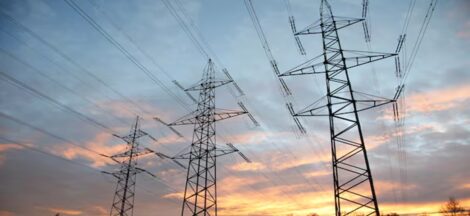NEW DELHI: India’s economic growth accelerated to 6.2 per cent in the December quarter of FY25, up from a revised 5.6 per cent in the previous quarter, reversing two consecutive quarters of slowdown. However, significant revisions to past data have left economists perplexed.
Data released by the Ministry of Statistics and Programme Implementation (Mospi) on Friday showed the economy is expected to grow at 6.5 per cent in FY25, marginally higher than the 6.4 per cent projected in January.
The average GDP growth for the first three quarters of FY25 stands at 6.1 per cent, implying that fourth-quarter growth is assumed at 7.6 per cent, a target economists say is challenging but achievable.
Alongside the FY25 growth projection, Mospi revised growth estimates for FY23 to 7.6 per cent from 7 per cent and for FY24 to 9.2 per cent from 8.2 per cent.
Nominal GDP for FY25 is projected at ~331 trillion, assuming a growth rate of 9.9 per cent, slightly higher than the 9.7 per cent estimated in January’s first advance projections. This is expected to ease the government’s path to achieving the revised fiscal deficit target of 4.8 per cent of GDP for FY25.
“We could see a downward revision in full-year estimates in subsequent revisions. We expect GDP growth at 6.8 per cent in Q4FY25 (January–March 2025). While today’s GDP print shows that economic activity picked up in Q3FY25, the increase remains moderate. Therefore, we continue to expect the Reserve Bank of India to deliver another 25-basis-point rate cut in April 2025 to support growth. Monetary policy operates with a lag, and global headwinds continue to weigh on India’s growth outlook for FY26,” said Sakshi Gupta, principal economist at HDFC Bank.
In the December quarter, agriculture grew robustly at 5.6 per cent, aided by a steady progression in rabi sowing. Manufacturing growth remained sluggish at 3.5 per cent. Growth in the construction sector slowed to 7 per cent from 8.7 per cent in the September quarter.
However, services sector growth accelerated to a three-quarter high of 7.4 per cent, driven by public administration, defence, and other services such as education, health, and recreation.
India Ratings economist Paras Jasrai noted that consumption demand is becoming more broad-based, with the lower-income bracket catching up. This is evident from rural real wage growth in agriculture, which remained positive for the second consecutive quarter in Q3FY25. “The quarterly results of FMCG companies also pointed to a sustained recovery in rural demand, which is favourable both for consumption and GDP growth,” he said.
Growth in private final consumption expenditure accelerated to 6.9 per cent in the December quarter, up from 5.9 per cent in the previous quarter.
In contrast, gross fixed capital formation, a proxy for investment demand, marginally slowed to 5.7 per cent. However, government final consumption expenditure —spending by both the central and state governments —rebounded to 8.3 per cent in the December quarter, recovering from an election-led contraction in the June quarter.
Led by services exports, overall exports grew by 10.4 per cent during the December quarter, despite global headwinds, while overall imports contracted by 1.1 per cent for the third consecutive quarter.
Pranjul Bhandari, chief India economist at HSBC, cautioned against taking growth for granted. “Our 100-indicator database suggests that while December was very strong, January data so far points to some softness, led by a sluggish trade and transport sector and weak consumer loans. There are downside risks to growth from uncertainty around tariffs. However, if the economy continues to take the right policy steps (lowering import tariffs, signing trade agreements, welcoming regional FDI, and keeping the rupee flexible) there could be growth gains in the future,” she said.
Source: Business Standard




 Gene Hackman Became A Great Hollywood Actor With His Working Class Background
Gene Hackman Became A Great Hollywood Actor With His Working Class Background 